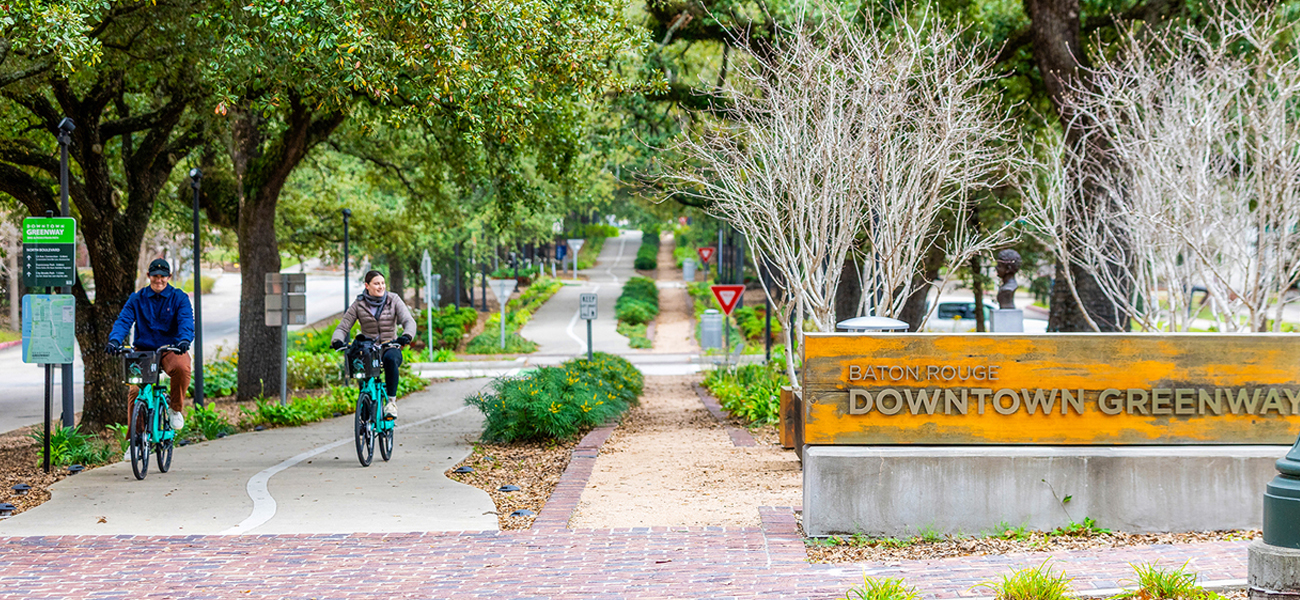
How to play it safe while biking in Baton Rouge
Bike Baton Rouge founder Mark Martin hasn’t owned a car in 30 years. As one of the city’s biggest cycling advocates—and as someone who has seen pretty much every part of the city from two wheels—he knows a thing or two about how to operate safely on the road. He shares advice for new riders. bikebr.org
Tell us your background and experience with biking in Baton Rouge.
I haven’t had a car since 1991. When I moved to Baton Rouge in 2000, I thought someone needed to do something about the city’s lack of biking resources, so I started Bike Baton Rouge in 2006. In 2019, I rode 6,000 miles around town. I wasn’t taking trips; I was mostly just getting around doing what I needed to do. I started tracking my mileage because most people say you can’t safely ride your bike across town. And clearly, that is not the case.
What would you say, then, to someone who wants to start commuting by bike but is concerned about safety?
Consider taking a different route than the one you’d take if you were driving. The Bike Baton Rouge website has a map of recommended routes. We’ve vetted them all pretty thoroughly, riding them multiple times on different days of the week. You could also put your bike on a vehicle, drive to a point closer to your destination, and then bike from there. Take a weekend when you don’t have any time constraints to practice the route. Developing map-reading and navigation skills is critical.
|
|
Besides a helmet, what safety measures should riders follow?
Make sure your bicycle is in good mechanical condition. Check that the tires have air and the brakes work. Actually learn how to ride it—how the bike behaves, how you behave on it, how to navigate turns and make emergency stops. Always use lights at night, so people can see you and you can see in front of you. Pay attention. Do not use your phone while riding. And never, ever assume that someone in a vehicle is going to obey a law. Even though you have the right of way at an intersection, never assume they know you do.
What about drivers? With more bikes on the road, how can they practice caution?
Recognize that under the law, a bicycle is a vehicle. We don’t necessarily want to be riding in traffic on the road, either. When I’m on Highland, I don’t want to be in front of anybody any more than they want to be driving around me. Show respect, and have patience.
The Gotcha bikeshare program has made bikes much more accessible. What wisdom do you have for new electric bikers?
Be cautious in the beginning. A lot of people trying Gotcha bikes are taken by surprise when that electric boost kicks in. The bike suddenly feels out of control. You really do need to ride electric bikes for a little bit to adjust, because they are top heavy and don’t behave like normal bikes. Gotcha bikes are designed to fit as many body types as possible, so the frame size may not be as specific to you as you’re used to.
What else should we know about the local future of safe biking?
Drivers and bicyclists are natural allies in that we both want to be able to operate our vehicles safely. When it comes time to support bicycle infrastructure that will allow bicycles to operate with traffic—but not in traffic—support it. It’s going to make driving better. It’s going to make riding better. Everyone will benefit.
This article was originally published in the February 2021 issue of 225 magazine. Answers have been edited for clarity and brevity.
|
|
|

